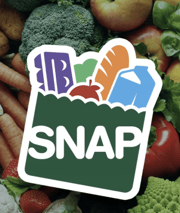
You're enjoying dinner at your favorite restaurant when the bill arrives with an unwelcome surprise. Along with the usual taxes and suggested tip, there's an extra line item you've never seen before: "Employee Benefits Surcharge - 5%."
What just happened to your bill?
You're not alone in wondering.
It's becoming more common for Chicago restaurants to tack on a surcharge at the bottom of your bill, and this trend is spreading nationwide.
These mysterious fees are showing up everywhere from airport Panda Express locations to neighborhood Dunkin' shops, leaving diners confused and reaching deeper into their wallets.
The new reality of dining out
These surcharges usually range from 3% to 5% of your total bill and appear under different names such as "Employee Benefits Surcharge," "Employee Health & Retention Fee," or simply "Service Fee."
Major chains like Panda Express, Dunkin', and Jersey Mike's have all been spotted adding these charges—often without advance notice to customers.
The fees might seem small—just a dollar or two on most meals—but they add up quickly.
For frequent diners, these charges could easily total hundreds of dollars per year in extra dining costs.
Also read: 7 restaurant chains still serving big portions at small prices
What's behind this trend?
Restaurant owners are facing a perfect storm of rising costs.
Only 31% of restaurants offer health insurance to workers, yet the pressure to provide competitive benefits has never been higher.
Labor shortages after the pandemic have forced restaurants to compete more aggressively for staff.
Restaurants with lower turnover rates tend to perform better in both customer traffic and sales growth—making employee retention a top business priority.
Rather than raising menu prices—which might drive customers away—many restaurants have opted for these separate surcharges instead.
"We believe if we are healthy and happy, we can pass it on to the guests."
University of Chicago economics professor Matt Notowidigdo notes that the pandemic hit leisure and hospitality sectors especially hard, creating staffing issues that restaurants are still working through today.
Also read: Elderly woman’s Christmas note to restaurant staff leaves a lasting impact
The legal landscape is changing
There’s some good news for diners who value transparency—some states are stepping in to regulate how these fees are disclosed.
California’s Senate Bill 478, known as the “junk fee ban,” took effect in 2024 and requires businesses to include all mandatory fees in advertised prices.
In California, restaurants must clearly show any surcharges at checkout so customers know the full cost before paying.
However, this level of protection doesn’t extend to most other states yet.
Currently, there are no federal or widespread industry regulations preventing restaurants from adding these fees as they choose.
Where does the money actually go?
This is where things get murky—and controversial.
Some restaurants use these fees to help fund employee health insurance, paid leave, or retirement plans.
Others simply add the surcharge to offset operating costs while claiming it supports staff benefits.
Certain restaurants even allow guests to opt out of the fee, though this option is rarely made obvious on menus or receipts.
With no standardized rules, it’s up to each business to decide how to apply or explain the charges, leading to confusion for customers.
Source: Facebook / Sophonna Sheppard
Also read: Restaurants have a sneaky new charge – have you paid it without knowing?
What this means for your wallet
For seniors or anyone on a fixed income, these unexpected add-ons can quickly strain a budget.
A couple dining out twice a week could end up paying an additional $200–$300 a year from these fees alone.
When combined with rising menu prices, the impact on household spending becomes even more noticeable.
Common surcharge names to watch for
Employee Benefits Surcharge
Health & Retention Fee
Service Fee
Employee Health Fee
Living Wage Surcharge
Benefits & Retention Charge
Also read: Is your bank about to charge you $15 a month? Wells Fargo’s new fee kicks in soon
Your consumer rights and options
While you may not be able to avoid every surcharge, you can still protect yourself by staying alert.
Ask questions upfront when booking a reservation or before ordering—this helps you make informed choices.
Read the fine print on menus, table tents, or posted signs to see if fees are disclosed.
Paying with cash can sometimes help, since a few surcharges only apply to credit card payments.
If you feel a fee was unclear, politely raise the issue with management—many will remove it once it’s brought to their attention.
Also read: Duped by water charges? Customers in nine states may be paying for rain
Tips for navigating this new landscape
Before you go:
- Check restaurant websites for fee information
- Read online reviews that might mention surcharges
- Call ahead and ask about additional fees
At the restaurant:
- Scan menus for small-print fee disclosures
- Ask your server to confirm any added charges
- Request to see the restaurant’s surcharge policy
When paying:
- Review your bill closely before finalizing payment
- Ask questions about unfamiliar charges
- Keep a photo of your receipt for your records
Essential facts about restaurant surcharges
- Fees typically range from 3–5% of your bill
- No national regulations currently restrict these charges
- California requires clear disclosure—other states may follow
- Some restaurants allow opt-outs if requested
- Always check your bill carefully before paying
Looking ahead
Restaurant surcharges aren’t likely to disappear anytime soon.
As businesses continue to face rising labor and benefit costs, these fees could become a permanent fixture on dining bills.
Some states are exploring similar legislation to California’s junk fee law, which may offer greater transparency for diners nationwide.
Until then, awareness and careful review remain your best tools as a consumer.
While the restaurant industry argues that these fees improve working conditions and service quality, diners have every right to expect honesty and clarity about where their money goes.
Read next:
- Shoppers baffled by Walmart’s new $5 checkout fee—Here’s what’s really going on
- Are you unknowingly paying a hidden fee at Dunkin’? Here’s what to check on your receipt
- Watch your receipt: Dollar General shopper raises concerns over repeated overcharges
Have you noticed new surcharges at your favorite restaurants? Share your experiences and thoughts about how businesses should handle these extra fees in the comments below.
Primary Source
https://www.the-sun.com/money/15353...find-employee-benefits-surcharge-restaurants/
Restaurant tab higher than expected? You may be paying for employees' healthcare benefits
Cited text: It’s becoming more common for Chicago restaurants to tack on a surcharge at the bottom of your bill.
Excerpt: It's becoming more common for Chicago restaurants to tack on a surcharge at the bottom of your bill
https://www.nbcchicago.com/consumer...ng-for-employees-healthcare-benefits/3626593/
31% of restaurants offer health insurance to workers, survey finds | Restaurant Dive
Cited text: While climbing turnover rates are pressuring chains to beef up their employee benefits, only 14% of restaurant owners surveyed in Toast's 2019 Re...
Excerpt: Only 31% of restaurants offer health insurance to workers
https://www.restaurantdive.com/news...nts-offer-health-insurance-to-workers/559857/
How to Budget for Restaurant Employee Benefits
Cited text: Restaurants with lower turnover levels perform much better when it comes to traffic and restaurant sales growth.
Excerpt: Restaurants with lower turnover levels perform much better when it comes to traffic and restaurant sales growth
https://pos.toasttab.com/blog/on-the-line/how-to-budget-for-restaurant-employee-benefits
Understanding California Restaurant Surcharges: The Ultimate Guide to the Laws and Best Practices
Cited text: In 2024, California introduced Senate Bill 478 (SB 478), often referred to as the “junk fee ban.” This law was designed to eliminate hidden fees acros...
Excerpt: California introduced Senate Bill 478 (SB 478) in 2024, often referred to as the "junk fee ban"
https://www.swipesum.com/insights/u...ultimate-guide-to-the-laws-and-best-practices
Understanding California Restaurant Surcharges: The Ultimate Guide to the Laws and Best Practices
Cited text: In California, businesses are required to clearly display any surcharges at checkout, ensuring customers are fully informed about all fees before comp...
Excerpt: In California, businesses are required to clearly display any surcharges at checkout, ensuring customers are fully informed about all fees before completing their purchase
https://www.swipesum.com/insights/u...ultimate-guide-to-the-laws-and-best-practices
Restaurant tab higher than expected? You may be paying for employees' healthcare benefits
Cited text: He says there are no industry regulations against adding surcharges to restaurant bills.
Excerpt: there are no industry regulations against adding surcharges to restaurant bills
https://www.nbcchicago.com/consumer...ng-for-employees-healthcare-benefits/3626593/
Many Restaurants Now Charging 'Employee Benefit' Fee On Checks To Offset Health Insurance Costs
Cited text: Some restaurants already offer patrons the option of "opting out" of the surcharge—however, as chef and restauranteur Sean Brock told The New York Tim...
Excerpt: Some restaurants already offer patrons the option of "opting out" of the surcharge
https://www.shefinds.com/collections/customers-furious-employee-benefit-fee/






